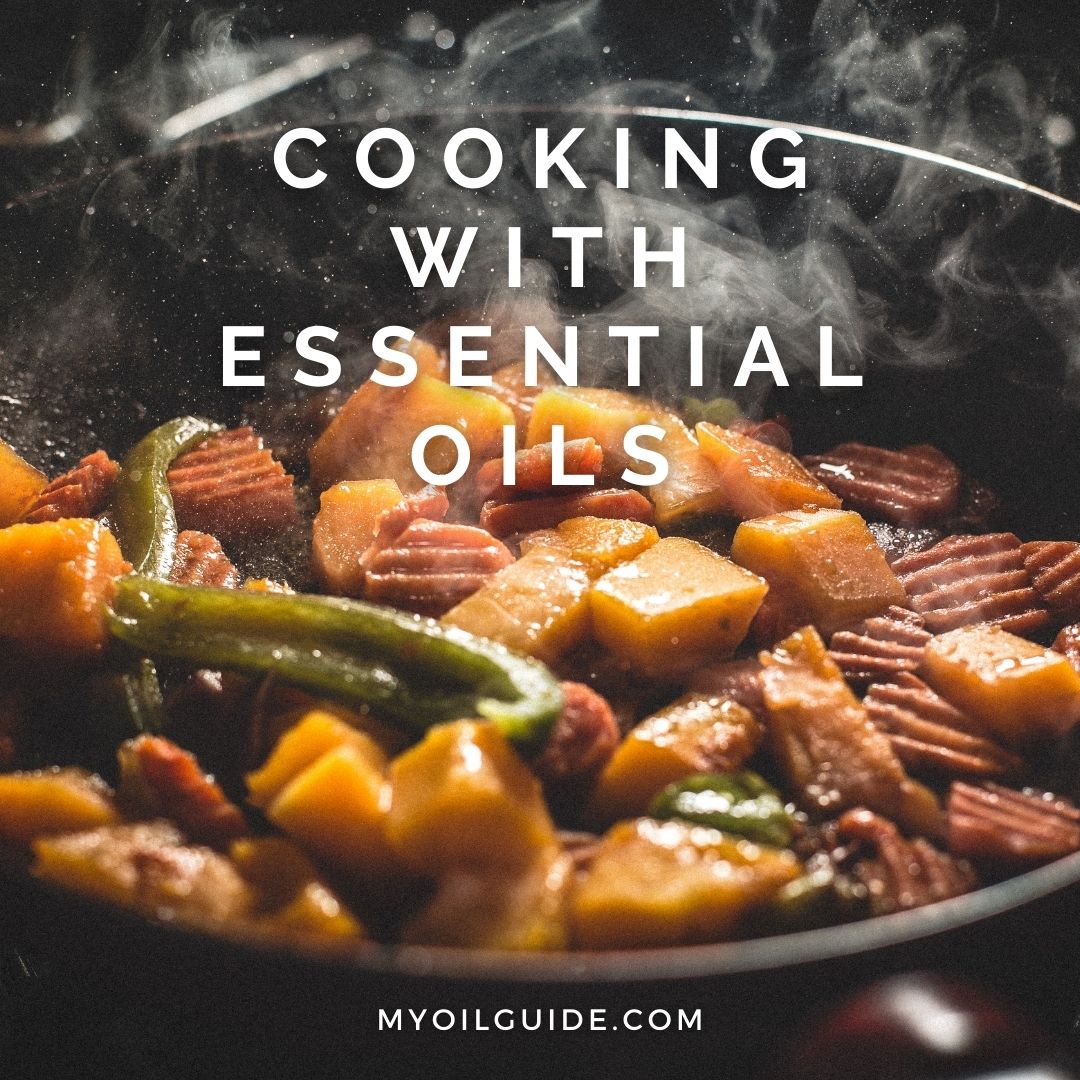Benefits of Essential Oils in Cooking
Chefs of many fine restaurants, personal chefs, nutritional coaches and At-Home-Chefs have discovered the value of fortifying recipes with digestible grade essential oils that are labeled as nutritional supplements and can be used internally (do not use any essential oils in cooking unless labeled as safe for internal use).
Using digestible essential oils in cooking, we can fortify meals and enhance flavors on many levels. Adding just one drop of an essential oil to a dish can elevate the flavor to a new level as well as support health benefits such as increasing antioxidant intake, aid digestion, act as a cleansing agent, and generally support health and wellbeing in a variety of ways.
You may be asking yourself, “I’m already using herbs, why should I use the same thing in essential oil form instead?”. The answer to this frequently asked question is because essential oils are so powerful in their aroma and also much less expensive than fresh herbs. Pure tested grade essential oils are 50-70 times more potent than used in herbal form. Just imagine what that can do in terms of enhancing aroma and flavor and other supporting wellness benefits! When you purchase fresh herbs, let’s use cilantro as an example, a fresh bunch of organic cilantro may be around $2-$3. One drop of cilantro essential oil can cost you as little as $0.11 and the taste will always be amazing and fresh.
Your next question may be, “What about shelf life?”. Essential oils, kept out of direct light and heat, can last us for many years (citrus oils generally three years), other essential oils much longer than that. That’s why my spice cabinet contains many different essential oils that I like to use to enhance my cooking (see table below with suggestions).
How do we use essential oils in cooking?
Important is to always remember their potency. One drop is often already sufficient. If you are making a large quantity of food and are unsure, start with adding one drop, blend well, taste. You can always add one more drop if the flavor could still be enhanced a little more.
Essential tips:
- DO NOT drip directly from the essential oil bottle over your pan or pot. Some essential oils drip very fast and instead of 1 drop, 2 or 3 drops can come out quickly and ruin the dish. ALWAYS drip into a teaspoon first, so you know that you only have one drop.
- When I make small quantities of food and would actually need less than one drop, I either dip a toothpick into the essential oil bottle and swirl in the food I’m preparing or I add one drop to a table spoon, then let it drip from the table spoon into what I’m preparing. Some of the essential oil will stay on the table spoon reducing the amount to less than a drop.
- ALWAYS add your essential oil drop(s) to the liquid part of your recipe and blend well. This way you will achieve equal distribution throughout your dish.
- When using essential oils in cooked dishes, add at the end when you are basically done cooking, reducing the heat to a simmer or turning it off. For instance, when I cook a dish in a saute pan, I will add the essential oil to 1 teaspoon or 1/2 teaspoon of my cooking oil of choice, reduce heat to simmer, drip the blended oil around the food on the outside of pan so it can permiate to the inside for about 30 seconds to 2 minutes, then serve. When making soups, sauces and stews, I will add my essential oils blended with a little bit of my cooking oil at the end of the cooking cycle, stir well, let sit for 2 minutes with heat turned off.
Why add essential oils at the end?
Essential oils are sensitive to heat and light. Both will reduce the potency of the essential oil. Adding essential oils to cooking oils that have a high smoke point (i.e. avocado oil, grapeseed oil, almond oil, sunflower oil) will help preserve the potency of the essential oils. Therefore, I add my drop(s) of essential oils to a small quantity (1/2 teaspoon to 1 teaspoon) of my cooking oil before adding it to my dish at the end of the cooking cycle. When using essential oils in marinades (for fish or meat cooked in the oven), I will use a high smoke point carrier oil in my marinade and use at a cooking heat of less than 400 degrees.
Some Common Essential Oils used in Cooking
| Basil Essential Oil | sauces |
| Black Pepper Essential Oil | season |
| Cilantro Essential Oil | salsa |
| Cinnamon Essential Oil | desserts |
| Clove Bud Essential Oil | desserts |
| Coriander Essential Oil | sauces |
| Fennel Essential Oil | sauces |
| Ginger Essential Oil | asian |
| Lavender Essential Oil | desserts |
| Lemongrass Essential Oil | thai |
| Lemon Essential Oil | seafood, veggies |
| Lime Essential Oil | seafood |
| Marjoram Essential Oil | poultry |
| Oregano Essential Oil | sauces |
| Peppermint Essential Oil | BBQ, chocolate bark |
| Rosemary Essential Oil | meats, veggies |
| Thyme Essential Oil | pork, fish, dips |
| Wild Orange Essential Oil | cookies, desserts, marinades |
Looking for a kit of essential oils for your kitchen? Connect with me and simply email me which oils you would like to use in your cooking and I will let you know how much your kit will be. You can order it directly with me.
Essential Oils Commonly Used to Enhance Water, Smoothies & Other Drinks
| Frankincense Essential Oil |
| Lavender Essential Oil |
| Ginger Essential Oil |
| Grapefruit Essential Oil |
| Lemon Essential Oil |
| Roman Chamomile Essential Oil |
| Wild Orange Essential Oil |
| Digestive Blend Essential Oil |








Leave A Comment